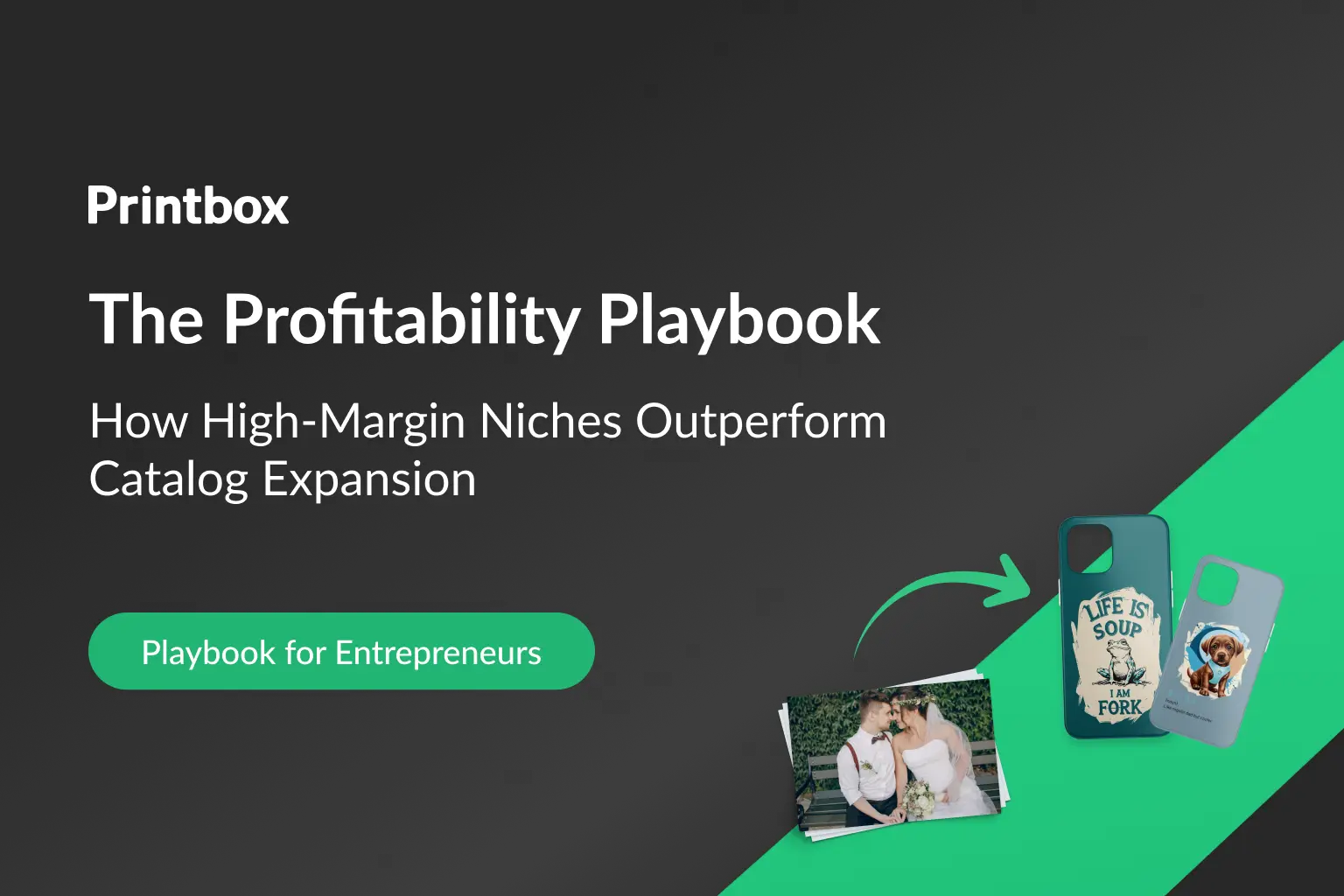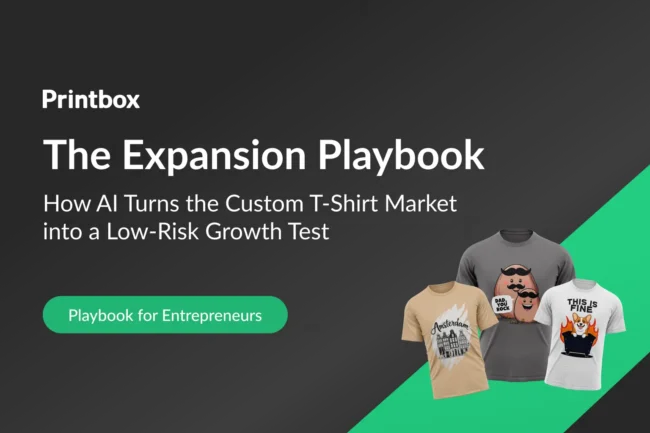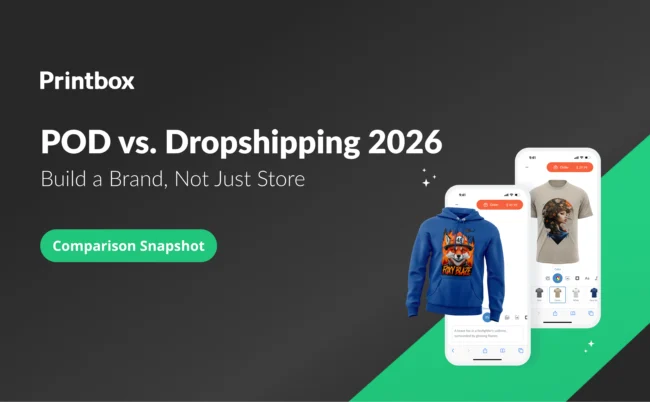The Profitability Playbook: How High-Margin Niches Outperform Catalog Expansion
Executive Summary
Who is this playbook for? For business leaders and strategists (CEOs, Heads of E-commerce, Product Directors) in the personalization industry who are facing slowing growth and margin erosion, and are searching for a new, profitable strategy that goes beyond simple catalog expansion.
- The Problem: Growth in the personalization market is slowing as core products become commoditized. Rising customer acquisition costs (CAC) and intensifying margin pressure demand a new, profitable growth strategy.
- The Thesis: The most effective strategy for 2026 is a radical deepening of your product offer, not a widening. Building a complete ecosystem around a single, carefully chosen narrative niche allows you to increase AOV and build a durable competitive advantage based on a unique customer experience.
- The Risk of Inaction: Continued competition in saturated categories leads to inevitable margin erosion and a gradual loss of market share to more focused players.
- Recommended Next Step (30-60 Days): Identify one promising niche based on your sales data. Launch a 7-14-day, low-budget test with a dedicated landing page, and measure key business metrics (AOV, conversion) against your standard product offering.
Margins on mugs and tees looked fine on your Q3 deck, yet the growth story felt thin. Your instinct is to add more products, more templates, hoping to capture a wider market. But this strategy of broad diversification often leads to diluted marketing efforts, increased operational complexity, and eroding margins.
This playbook offers a counterintuitive solution: stop widening your catalog and go deep. We’ll show you a focused, step-by-step model for building a high-margin vertical around a single narrative, allowing you to dominate a niche instead of just competing in a crowded market.
Market Proof: How to Win by Going Deep, Not Wide
We are observing a fundamental shift in the perception of photo products: for consumers, they are becoming, above all, tangible proof of their experiences and relationships. The most innovative companies have stopped competing in the generic “photo products” category. Instead, they are building dedicated, high-margin verticals by identifying a deep human need and building an entire business model around it.
The strategic focus shifts from merely adding another template to your catalog to owning the entire story. Analyzing the market, we have identified three repeatable models for success:
1. The “Experience Capture” Model: Travel Books
The Psychological Insight: A trip provides the natural structure of a story – beginning, middle, and end – which elevates a simple collection of photos into a cohesive narrative. The emotional investment is highest right after returning, during the “post-vacation glow”.
The Data-Driven Proof: This psychological insight is confirmed by a measurable market shift. Data analysis from the Alura tool for the Etsy marketplace, conducted in October 2025, shows that search volume for “travel photo book” surged by over 300% in the preceding three months. The real strategic insight, however, lies in the language buyers use: phrases like “travel journal photo book” and “travel memory photo book” are exploding in popularity. For a business leader, this is a clear signal: the greatest potential lies not in competing on price, but in offering a hybrid “journal-album” that satisfies this deeper narrative need.
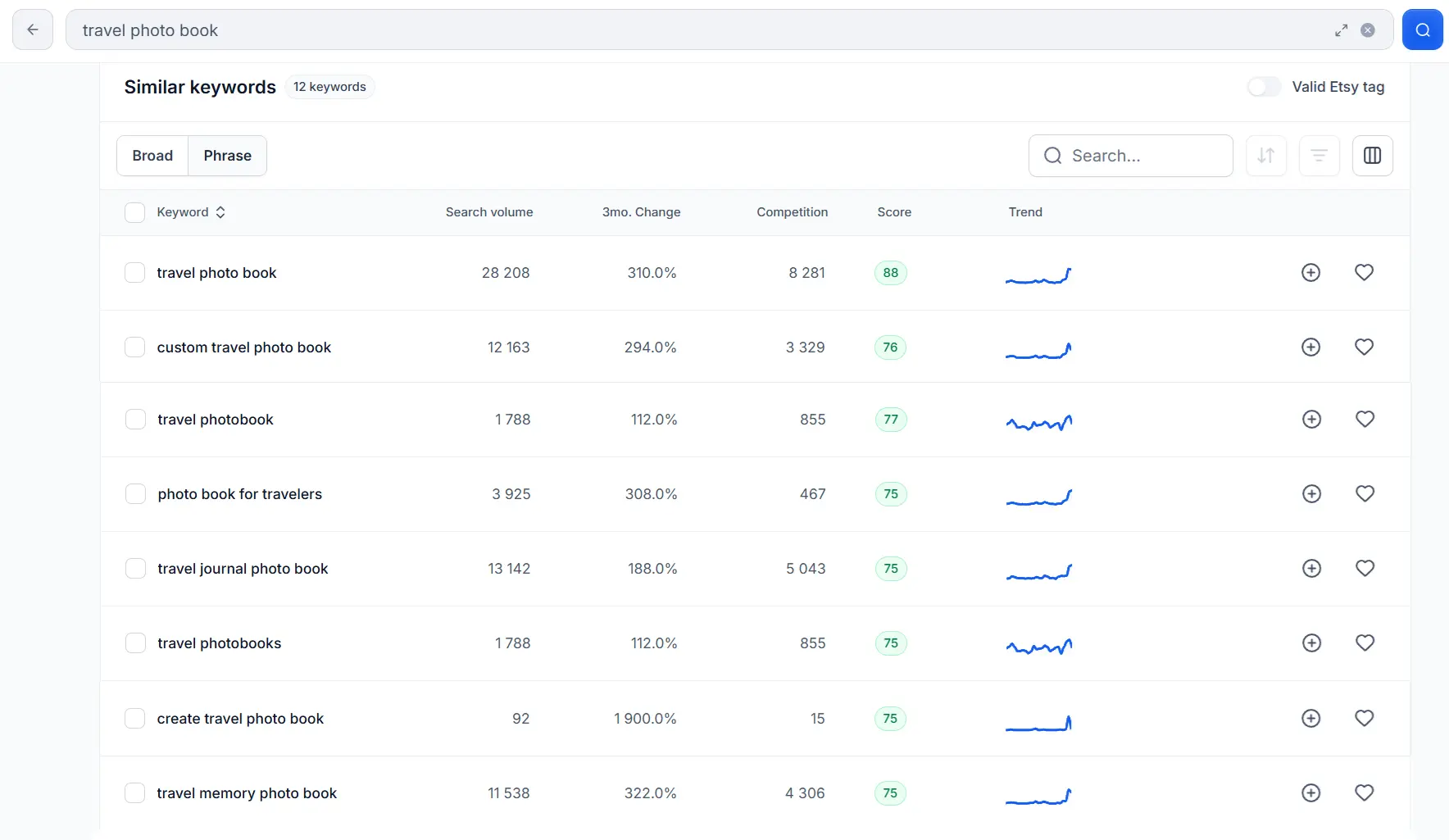
source: alura.com [October 2025]
The Business Model: This model transforms a low-margin product into a premium keepsake. Successful brands like Pixory (UK-based), Momento Books (Australia), and Souvence (France) position their products as premium “adventure albums” and “journey chronicles” rather than generic photobooks.
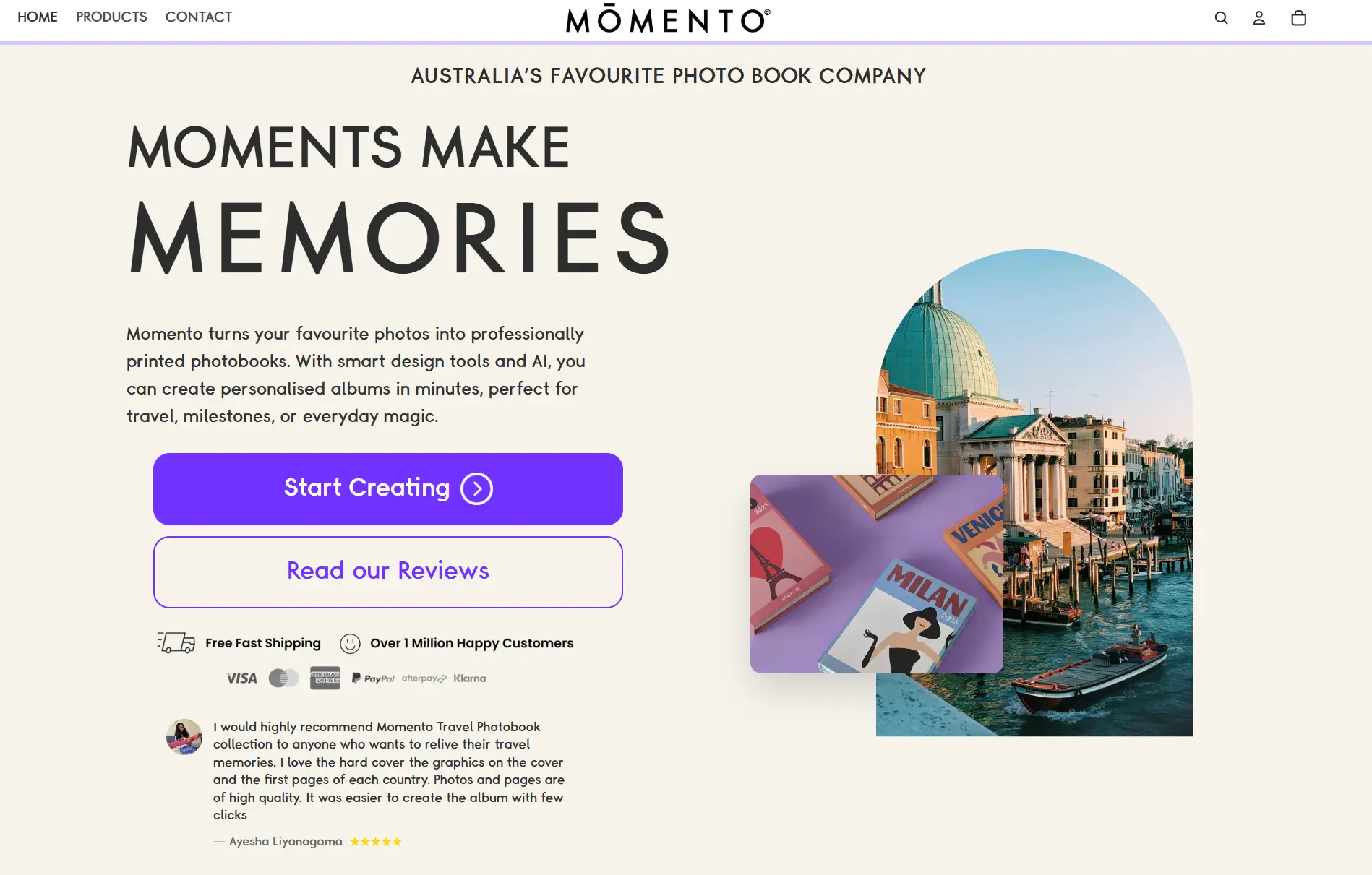
source: momento.com.au
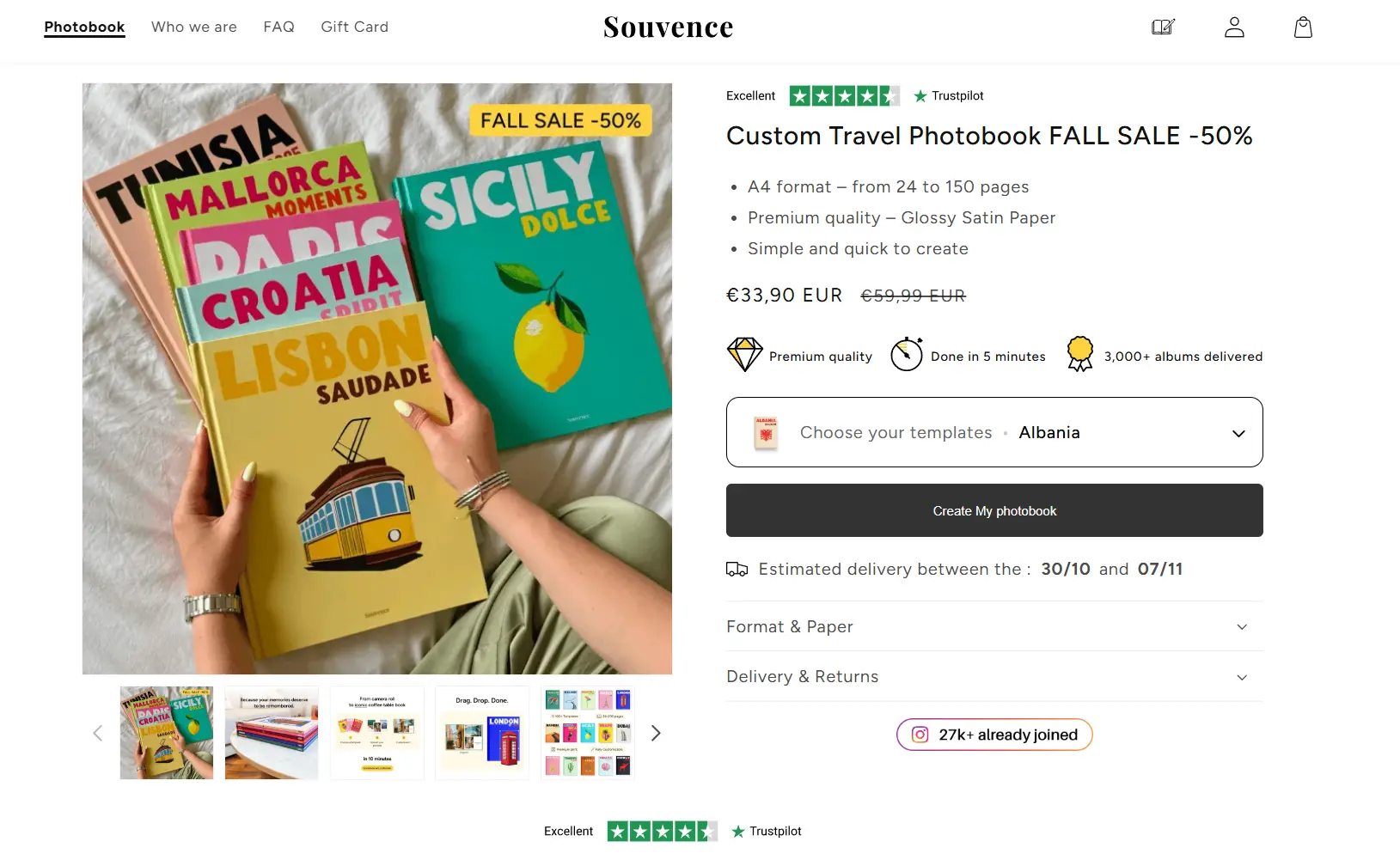
source: souvence.com
A Look Inside the Strategy: The Pixory Case
A deeper look, which we had the opportunity to discuss with our partners at Pixory, a brand with a global reach delivering to 31 countries, reveals a masterclass in how to validate and build a successful niche. Their process didn’t start with a product, but with observing a trend on TikTok, where travel books were going viral. However, instead of blindly copying the idea, they identified a critical friction point in the customer journey: existing solutions were fragmented. Customers had to find templates themselves, then use a generic editor on another platform to place their order.
Based on this, they formulated a hypothesis: “What if we created a comprehensive solution where the entire process – from design to order – happens in one place?” The key, however, was to validate commercial intent. The team analyzed comments under the viral videos, looking not just for admiration (“so cool!”), but for questions indicating a willingness to pay (“Where can I buy it?”, “How much is it?”). This brilliant yet straightforward market research confirmed that real demand existed. Pixory’s entire strategy is based on this agile, data-driven methodology:
Hypothesis → Test → Analyze → Scale.
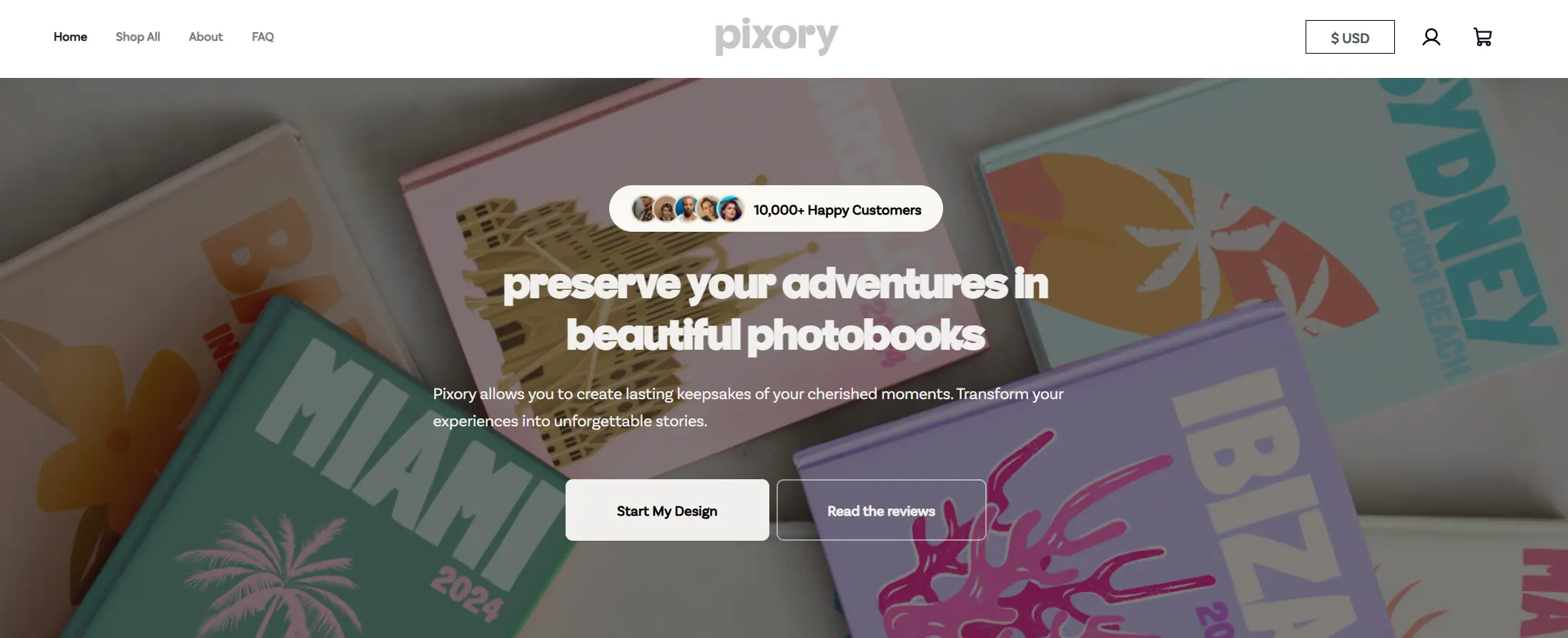
source: pixoryofficial.com
The Strategic Takeaway: The principle is simple – sell the story, not the format. The business lever here is increasing AOV by transforming the product into a premium keepsake. The verification question for your team is: “Which one-time, emotional event in our customers’ lives can we transform into a repeatable product line?”.
2. The “Intergenerational Bridge” Model: Legacy Books
The Psychological Insight: In a digital world, families crave tangible ways to connect across generations and preserve their heritage. A book becomes a vessel for stories and memories that would otherwise be lost.
The Data-Driven Proof: This psychological insight is fueled by a powerful cultural trend. The genealogy services market, dominated by global players like Ancestry.com, MyHeritage, and 23andMe, is worth billions, proving consumers are willing to invest significantly to connect with their heritage. The Legacy Book taps into the same trend, moving from data to personal stories. Furthermore, shopping cart analysis shows that products with sentimental value have lower abandonment rates and are less price-sensitive, especially during key sales periods.
The Business Model: This strategy taps into the powerful gift-giving market. A brand like Flotoclub (Portugal) understands that the buyer is often not the end-user. A gift becomes an investment in a relationship, which justifies a higher price point.
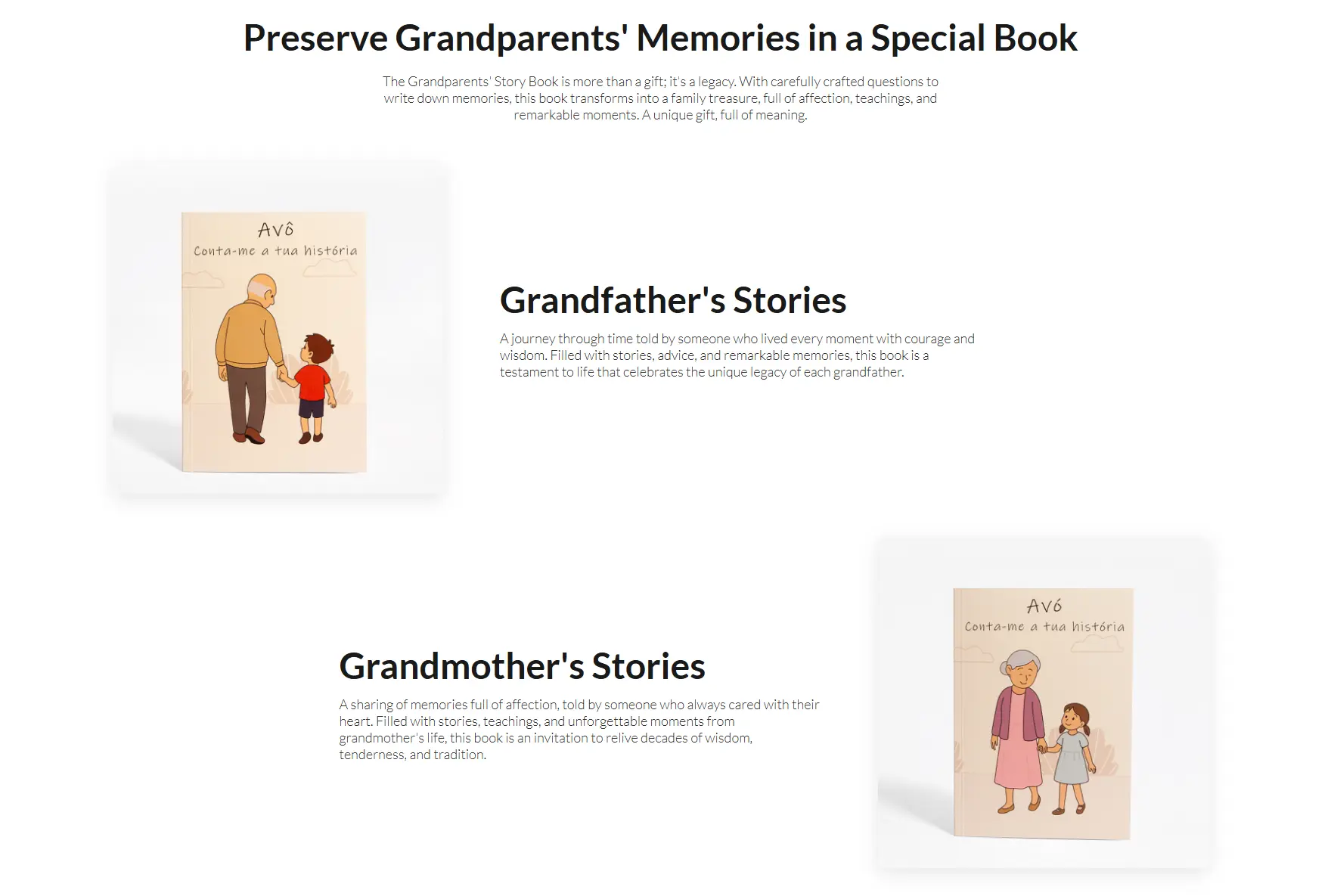
source: fotoclub.pt
The Strategic Takeaway: The principle is: monetize relationships, not transactions. The main business lever here is entering the gift market, which naturally raises margins and lowers price sensitivity. The verification question for your team: “For which group of our customers can we create a product whose main purpose is to strengthen interpersonal bonds?”.
3. The “Ritual & Community” Model: Milestone Books
The Psychological Insight: Certain life moments are cultural rituals (graduations, anniversaries) celebrated by a community, where the product’s value is amplified by the shared experience.
The Data-Driven Proof: This business model fundamentally changes the company’s key metrics. Its strength lies in generating recurring revenue, operating on a principle similar to a subscription model. From a business analysis perspective, models based on repeatable, cyclical events naturally lead to a significantly higher customer lifetime value (CLTV) and a lower churn rate compared to standard transactional models.
The Business Model: A company like Balfour (USA), a leader in the yearbook segment, doesn’t have to create demand; the end of the school year does that for them. With network effects and high barriers to entry, it’s extremely difficult for a competitor to displace a brand that has become part of the ritual.

source: balfour.com
The Strategic Takeaway: The principle is as follows: own the ritual, and you will own the market. The key business lever here is creating recurring revenue, which drastically increases CLTV and the value of the entire company. The verification question for your team: “What cyclical, community-based event can we ‘annex’ and become an integral part of?”.
The Playbook: How to Build a Profitable Niche in 4 Steps
Understanding these models for success is the first step. The key, however, is to translate this strategic knowledge into concrete, measurable actions that can be taken within your organization. The following plan is designed to help with that.
Step 1: Choose Your Battlefield (Niche Identification)
Strategic Goal: To make a data-driven decision, not an intuitive guess, to minimize risk and maximize potential return on investment.
🎯 Actionable Tactics:
- Internal Data Analysis: This is your most important source of truth. Start by analyzing your own order database. Identify customer segments with the highest repeat purchase rate and customer lifetime value (LTV).
- External Trend Analysis: Use your internal data as a filter for market analysis. If your data suggests potential in pet memorials, check Google Trends, Pinterest, or market reports to see if this trend is growing. Look for confirmation, not just inspiration.
🧠 Key Questions to Ask Your Team:
- “Which customer segment has the highest lifetime value (LTV) and why?”
- “What are our most profitable products, even if they have low sales volume?”
- “Can we identify a group of customers who are already using our products in a niche, repeatable way?”
⚠️ Common Pitfall: Chasing a fashionable trend without confirming that you already have a customer base potentially interested in it.
Step 2: Create a Defensible Experience
Strategic Goal: To build competitive insulation based on a unique customer journey that is difficult and costly for competitors to replicate, even if they can copy the product itself.
🎯 Actionable Tactics:
- Create a Landing Page That Is a Manifesto: Your landing page must be the hub of your new narrative. Tell the story this product helps preserve. Use powerful, emotional headlines and testimonials.
- Design a “Guided Journey”: A customer entering your niche cannot be overwhelmed with hundreds of options. Create a dedicated “wizard” for them that eliminates all the noise. This strategic question for you and your technology team is: is your current platform flexible enough to support such a dedicated, boutique path, or do its limitations force a standard approach?
🧠 Key Questions to Ask Your Team:
- “Does this buying journey feel like a personal, boutique experience?”
- “Have we removed every unnecessary step that could cause decision paralysis?”
- “Does our marketing communication sell the story or the product specification?”
⚠️ Common Pitfall: Treating this like a standard new product launch and just throwing it in as another category in the main menu.
Step 3: Validate the Hypothesis (Test and Measure)
Strategic Goal: To get an unambiguous “go/no-go” signal with minimal investment, to make decisions based on hard business data.
🎯 Actionable Tactics:
- Define Success BEFORE You Start: Before you spend a dime on advertising, define what success means. For example: “The goal is to achieve an AOV 20% higher than our standard product, while maintaining a similar conversion rate”.
- Run a Precision Test: Conduct a short (7-14 days), low-budget campaign, directing traffic exclusively to your new landing page. Use remarketing and the email segment identified in Step 1.
- Measure What Matters: The key indicators are: AOV, product margin, conversion rate, and customer acquisition cost (CAC). Compare them to the results of your standard offer.
🧠 Key Questions to Ask Your Team:
- “What is our primary success metric for this test?”
- “How are we isolating variables to ensure we’re testing the effectiveness of the new offer?”
- “What is our break-even point for this niche?”
⚠️ Common Pitfall: Ending the test prematurely or making decisions based on ambiguous data.
Step 4: Scale the Victory (Reinvestment and Growth)
Strategic Goal: To turn a successful test into a profitable and growing business line.
🎯 Actionable Tactics:
- Scale in Phases:
- Phase 1: Conversion Optimization. Focus on improving the landing page.
- Phase 2: Reach Expansion. Gradually increase the budget for proven channels.
- Phase 3: Offer Expansion. Only now should you start thinking about complementary products (upsells).
- Create a Social Proof Loop: Actively ask your first satisfied customers for reviews. Use their photos and quotes on your landing page and in your ads. Authentic case studies are the most credible source for building authority.
🧠 Key Questions to Ask Your Team:
- “Have we maximized the conversion on our core offer before we start expanding the product line?”
- “Does adding a new product strengthen or dilute the focus of our niche?”
- “How can we automate the process of collecting and using customer reviews?”
⚠️ Common Pitfall: Scaling marketing budgets too quickly before optimizing for conversion, which destroys profitability.
This 4-step playbook outlines a powerful strategy. The key to its execution lies in a platform flexible enough to build, test, and scale these unique customer journeys without high upfront investment.
➡️ Book a strategic demo to see how Printbox’s technology is designed to implement this exact playbook – helping you dominate a profitable niche, not just compete in a crowded market.
How Printbox Enables This Strategy
Translating these strategic models into reality requires a technology partner that is as agile and ambitious as your vision. Here’s how Printbox is specifically designed to help you execute this playbook:
- Launch Unique Buying Experiences Without Limits. To create a story-driven product, you need to control the customer journey. Our platform gives you the flexibility to build dedicated purchasing paths with custom options tailored precisely for the niche you are testing. This allows you to create a boutique experience without being restricted by one-size-fits-all templates or needing to duplicate entire configurations.
- Build and Adapt Templates with Maximum Efficiency. Speed to market is critical. Our template-building system is engineered for efficiency, allowing your team to add and adapt designs across all product sizes with minimal manual work. This frees up your creative resources to focus on the narrative, not on tedious technical adjustments.
- Leverage Strategic Expertise, Not Just Software. Executing this playbook is a partnership. Our Customer Success Managers and Site Merchandisers act as an extension of your team. They will work with you to implement these strategies effectively, helping you maximize existing solutions and avoid unnecessary budget burn to accelerate your growth.
Summary and Your Next Step
Stop thinking of your business as a product catalog. Start thinking of it as a portfolio of high-margin “micro-businesses”. Choosing one deep niche and building a complete ecosystem around it is the most effective strategy to outperform the competition and drive profitable growth in 2026.
What’s next? Depending on your current priorities, we suggest two actionable options:
- Follow our blog and our analysis on LinkedIn to regularly receive analyses, case studies, and strategies for leaders in the personalization industry.
- Schedule a strategic consultation with our team through our contact form if you’d like to discuss how to implement these solutions in your company.
